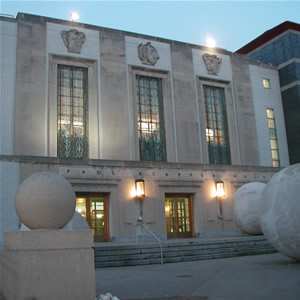
Klapper Hall, home of the English Department, Queens College, CUNY
Here is an excerpt from an online description of a course on Biblical Narrative taught at Queens College, CUNY. Joe and I saw it a couple of years ago but then lost track of who was responsible for it. Jonathan Allan recently came across it and sent it to us:
This course will introduce Biblical narrative, its special characteristics, and some of the various theoretical methods that have been recently used to interpret it, primarily from the two main camps of contemporary narrative theory, the structuralist/semiotic school descended from Gérard Genette and the rhetorical-formalist school descended from the late Wayne C. Booth. But we will also be looking into feminist, queer, Marxist, psychoanalytic, and postcolonial readings. Our principle narrative texts will be those in Genesis, Exodus, Judges, Ruth, Samuel, Jonah, Mark, and Luke. The literary critics and narrative theorists whose ideas we will be trying out will start with Erich Auerbach, and include, among others, Frank Kermode, Roland Barthes, Mieke Bal, Phyllis Trible, Terry Eagleton, Meir Sternberg, Robert Alter, Stephen Moore, Avivah Zornberg, Robert Kawashima, and Emmanuel Levinas; our chief whipping boys will be Harold Bloom and Northrop Frye.

One wonders how Bloom and Frye would react to being positioned together as “whipping boys.” The Frye-Bloom axis, as Eleanor Cook calls it, seems to be a continuous concern for those “in theory,” insofar as there seems to be a perpetual need to rebel against them both as though they are pushing the same agenda. Of course, this is, as any reader of Frye and Bloom knows, not true. Frye rebels against Bloom and Bloom rebels against Frye — Bloom’s writing since Frye’s death seems to be one long battle with Frye: The Western Canon is Bloom’s defence of value judgments; The American Religion (1992, reprinted in 2006), Jesus and Yahweh (2005), and, to a lesser degree, Omens of the Millennium: The Gnosis of Angels, Dreams, and Resurrection (1996), read as though they are responses to Frye’s Bible books; and then, of course, there is Bloom’s forthcoming book The Living Labyrinth: Literature and Influence (2010) which originally boasted the title: Anatomy of Influence. All of these books seem to try to position Bloom outside the shadow of Frye and yet Frye always seems to lurk in the background — perhaps, one can read Bloom’s book on Hamlet as something of meditation of the theoretical self (or as an autobiography, like The Anxiety of Influence). Of course, it would seem that Frye rebelled against Bloom as well, especially in the later years when Frye turned to the biblical texts. Despite the concerted efforts by both Bloom and Frye to distance themselves from each other, the reality is that these two literary giants are almost always seen in relation to one another — at least in terms of the history of literary criticism.
As I said elsewhere (a review of Frye and the Word, UToronto Pr, 2004):
The Great Code and its successor volumes on the Bible were… much less influential than Frye’s Anatomy [because] Frye was much better at explaining Everything than at explaining any individual thing. And the Bible, despite Frye’s insistence on its overarching unity, stubbornly remains an anthology of wildly disparate items, created over more than a millennium, and transmitted over two more with unpredictable vagaries of editing and translation. Frye understood William Blake’s Bible without any more Hebrew or Greek than Blake himself knew, and perhaps thought no more could be needed. He did not set himself to learn its languages and contemned its scholarly and critical tools, which may seem strange in a man whose ambition it had once been to make literary study more scientific.